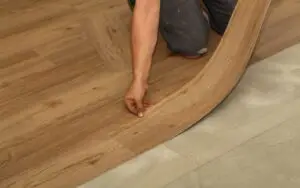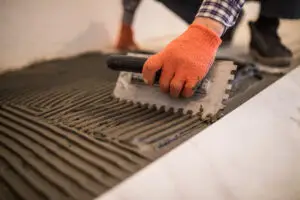Preparing for Old Carpet Removal
Gather Necessary Tools and Equipment
Safety Gear
Before beginning any carpet removal project, it is absolutely essential that you gather all of the necessary safety gear. This should include gloves, safety glasses, and a dust mask, to protect you from sharp objects, dust, and allergens. Using the correct safety gear will prevent injury, and make the carpet removal process much safer and more pleasant. Professional carpet removal services always use the proper safety gear, and are well-trained in safe removal techniques.
Cutting Tools
You will need several sharp cutting tools for carpet removal, including a utility knife or a carpet cutter. These tools will be used to cut the carpet into smaller strips that are easier to manage and remove. A sharp and reliable cutting tool is essential for making clean, accurate cuts that will protect both you and your subfloor. Professional carpet removal services always use the highest quality tools, and are trained to use them properly.
Gripping and Pulling Tools
You will also need tools for gripping and pulling the carpet, such as pliers, and a pry bar. These tools are very helpful for removing the carpet from tack strips and other areas where it is difficult to remove by hand. These types of tools are essential for a smooth, and efficient carpet removal, while also protecting your hands and fingers. Professional carpet removal services always have all of these types of tools readily available.
Protect the Work Area
Covering Furniture
Before beginning the carpet removal process, it’s essential to protect your furniture from dust and debris. You should cover all furniture that is in the room with plastic sheeting or drop cloths. This simple step can save a lot of time in cleaning up at the end of your project, and can protect your valuable furniture from unnecessary damage.
Protecting Doorways
Protecting doorways is equally important, to prevent dust and debris from spreading into other areas of your home. You can use plastic sheeting, painter’s tape, or drop cloths to create a barrier that will help contain all of the mess. Professional carpet removal services are very experienced in protecting all of the areas of the home from damage.
Step-by-Step Carpet Removal Guide
Cutting the Carpet into Strips
How to Properly Cut
Begin by cutting the carpet into strips, using your utility knife or carpet cutter. These strips should be manageable enough to handle and remove safely. Make sure to always cut along the back side of the carpet, while being careful to avoid damaging the subfloor underneath. Professional carpet removal services always have the highest quality cutting tools, and are trained in proper techniques to prevent any damage.
Avoiding Damage
Be careful not to cut too deeply, so that you do not damage the subfloor. When working near walls or other obstructions, make sure to take extra care to avoid cutting into the baseboards or other trim. Always take your time, and be sure to use the correct safety gear for each and every cut.
Removing the Carpet from Tack Strips
Safe Removal Methods
Use your pliers, pry bar, and gloves to carefully remove the carpet from the tack strips. Pull the carpet up and away from the strips, using your tools to grip the carpet, and make sure to use your safety glasses to protect from any flying debris. Always take your time and be sure to use the correct methods for proper removal. Professional installers are highly skilled in proper removal methods, and use the best safety practices to avoid any injuries.
Using Gripping Tools
Use your gripping tools to pull the carpet up and away from the tack strips. Work slowly and methodically, to avoid damaging the subfloor or injuring yourself. It is very important to use the correct gripping tools to avoid hurting your hands, fingers, and back. Professional installers have all of the tools, and the training needed to make sure that they do not hurt themselves, or cause any damage to the subfloor.
Removing Carpet Padding
Separating the Padding
Once the carpet has been removed, you will need to remove the carpet padding. This padding will often be loose, but it can also be stapled or glued to the subfloor, which will require additional steps for a complete removal. If the padding is glued down, you will need to use a scraper to remove the adhesive. Professional installers have all of the tools and knowledge needed to completely and properly remove the carpet padding.
Dealing with Staples and Adhesive
If the padding is stapled or glued, you will need to remove these fasteners or the remaining adhesive, using pliers, or a scraper. Take care to not damage the subfloor while removing the staples and adhesive. Professional installers always take the utmost care to not damage the subfloor while removing the padding, staples, and adhesives.
Cleaning the Subfloor
Removing Debris
Once all of the carpet and padding has been removed, thoroughly clean the subfloor using a broom, or a vacuum cleaner. This will remove all of the remaining dust, debris, and any loose pieces of carpet and padding. A clean subfloor is essential for proper installation of new flooring, which is why professional installers always use industrial grade vacuums, and other cleaning tools.
Checking for Damage
Inspect the subfloor for any damage, moisture, or other problems that will need to be addressed before any new flooring can be installed. Check for any loose or damaged areas, and make any necessary repairs. Addressing these types of issues before the new flooring is installed, will often prevent costly repairs in the future. Professional installers are also well-versed in all subfloor issues, and can advise you on all of your options.
DIY vs. Professional Carpet Removal
Challenges of DIY Removal
Physical Demands
DIY carpet removal can be very physically demanding, and can cause unnecessary back strain and other injuries, especially when the proper tools and techniques are not used. This type of work requires a lot of bending, lifting, pulling, and cutting, and will often result in strains, sprains, and other injuries. Professional installers are very well trained in proper lifting techniques, and use the proper tools to ensure they do not injure themselves.
Potential for Injury
DIY carpet removal also has a high potential for injury. You can easily get cut by sharp tools, get a sprain from improperly pulling heavy carpet, or get eye damage from flying debris. Using the proper safety gear is important for all DIY projects, however, if you are not experienced with these types of projects, then you may be at a higher risk for injury. Professional installers are highly trained in proper safety techniques, and have all of the safety gear needed to protect themselves.
Time Commitment
DIY carpet removal can also be very time-consuming, especially if you have a large area, and if you have never done this type of work before. What might take a professional installer a few hours, could take a DIYer several days, and with much less satisfactory results. When time is an issue, professional installers will always be the better choice.
Benefits of Professional Removal Services
Efficient and Safe Removal
Professional carpet removal services offer efficient and safe removal, by using the correct tools, techniques, and by always following proper safety guidelines. Their experience and efficiency will often save you time, money, and unnecessary stress. They are highly trained to complete these projects with the least amount of interruption to your home or business.
Proper Disposal
Professional services also ensure proper disposal of the old carpet and padding, which often includes recycling, whenever possible. This saves the homeowner time, and effort, while also protecting the environment. DIYers are often left with the arduous task of transporting the old carpet and padding to a recycling center, and properly disposing of it, which can be a major issue.
Subfloor Inspection
Professional carpet removal services will always include a subfloor inspection, which can identify any damage or other issues that need to be addressed before a new flooring is installed. Identifying these issues at this point, will help you prevent costly repairs in the future, and will ensure a beautiful and long lasting result for your next flooring project.
Case Studies: DIY vs Professional Carpet Removal
Example of DIY Removal Issues
A homeowner attempted to remove their old carpet themselves to save money. However, they did not use all of the correct safety equipment, which resulted in a bad cut on their hand, and dust in their eyes. They also struggled to remove the carpet from the tack strips, which required a lot of physical effort, and resulted in a sore back. They also had a very difficult time disposing of the old carpet and padding, requiring multiple trips to the dump.
Example of a Smooth Professional Job
Another homeowner hired a professional carpet removal service. The professional installers came on time, they used all of the correct safety gear, they were very careful to not damage the subfloor, and they were very careful not to cause any damage to the house. They completed the entire job quickly, and efficiently, and they properly disposed of all of the old carpet and padding, leaving the homeowner with a clean space for their new flooring project.
FAQs & Answers
To remove old carpet yourself, you'll need tools such as a utility knife, gloves, safety glasses, a pry bar, pliers, and a carpet cutter. Using the correct tools is very important for your safety and for a successful carpet removal, however many DIYers may not have all of these specialized tools. Professional carpet removal services have all of the correct tools, and the knowledge to use them properly.
Common mistakes people make when attempting DIY carpet removal include not wearing proper safety gear, trying to remove the carpet in one large piece, using the incorrect tools, and damaging the subfloor in the process. Professional carpet removal services have the knowledge, skills, and techniques to avoid all of these common problems and provide a smooth, clean, and safe carpet removal.
Professional carpet removal services save time and effort through their experience, efficiency, and proper training. They have all of the correct tools, equipment, and techniques to remove the old carpet quickly and safely, and they will always perform all of the necessary cleanup. DIY carpet removal projects are often very labor intensive, and professionals can eliminate all of the stress and physical requirements of these types of jobs.
Professional carpet removal services will dispose of the old carpet and padding properly, which often includes recycling, whenever possible. This ensures that the old carpet is not just sent to a landfill, but is handled responsibly, and in an environmentally friendly way. DIYers are often left with the responsibility of transporting the old carpet to a recycling center, which can be a very difficult, and labor-intensive task.
Professional carpet removal services will often include an inspection of the subfloor, which will identify any damage, moisture, or other issues that may need to be addressed before any new flooring is installed. This will often prevent issues, or costly repairs, down the road, and is just one of many benefits to hiring a professional for these types of projects.





